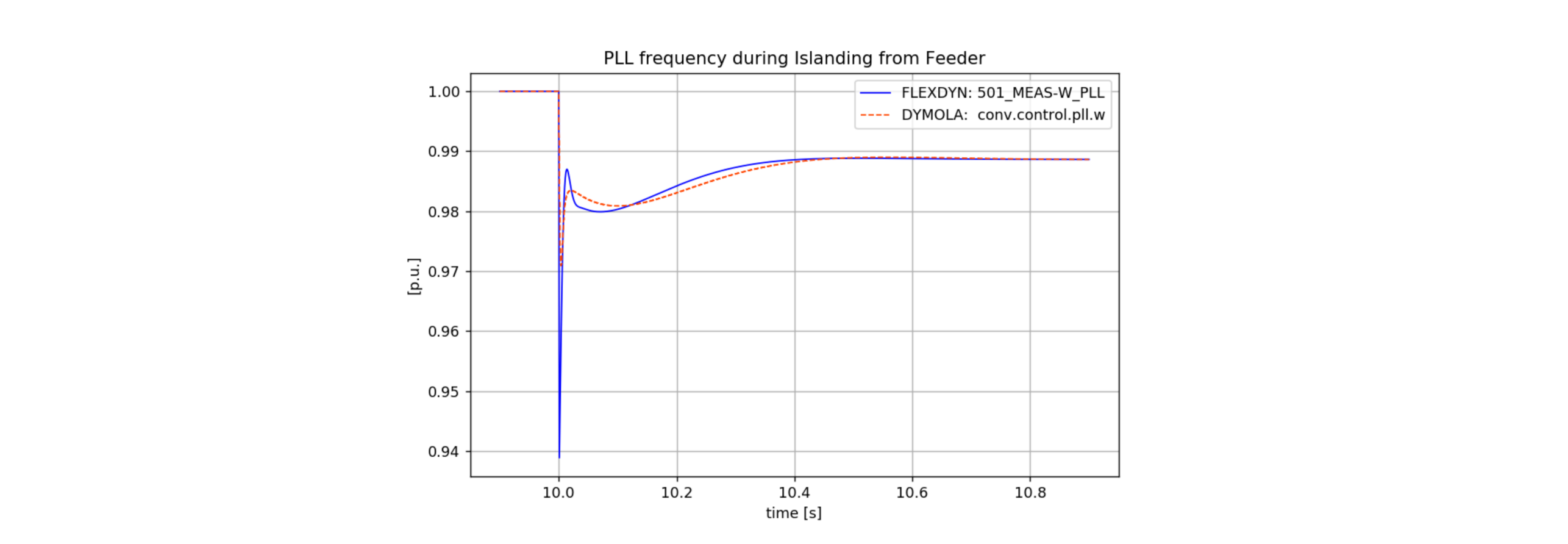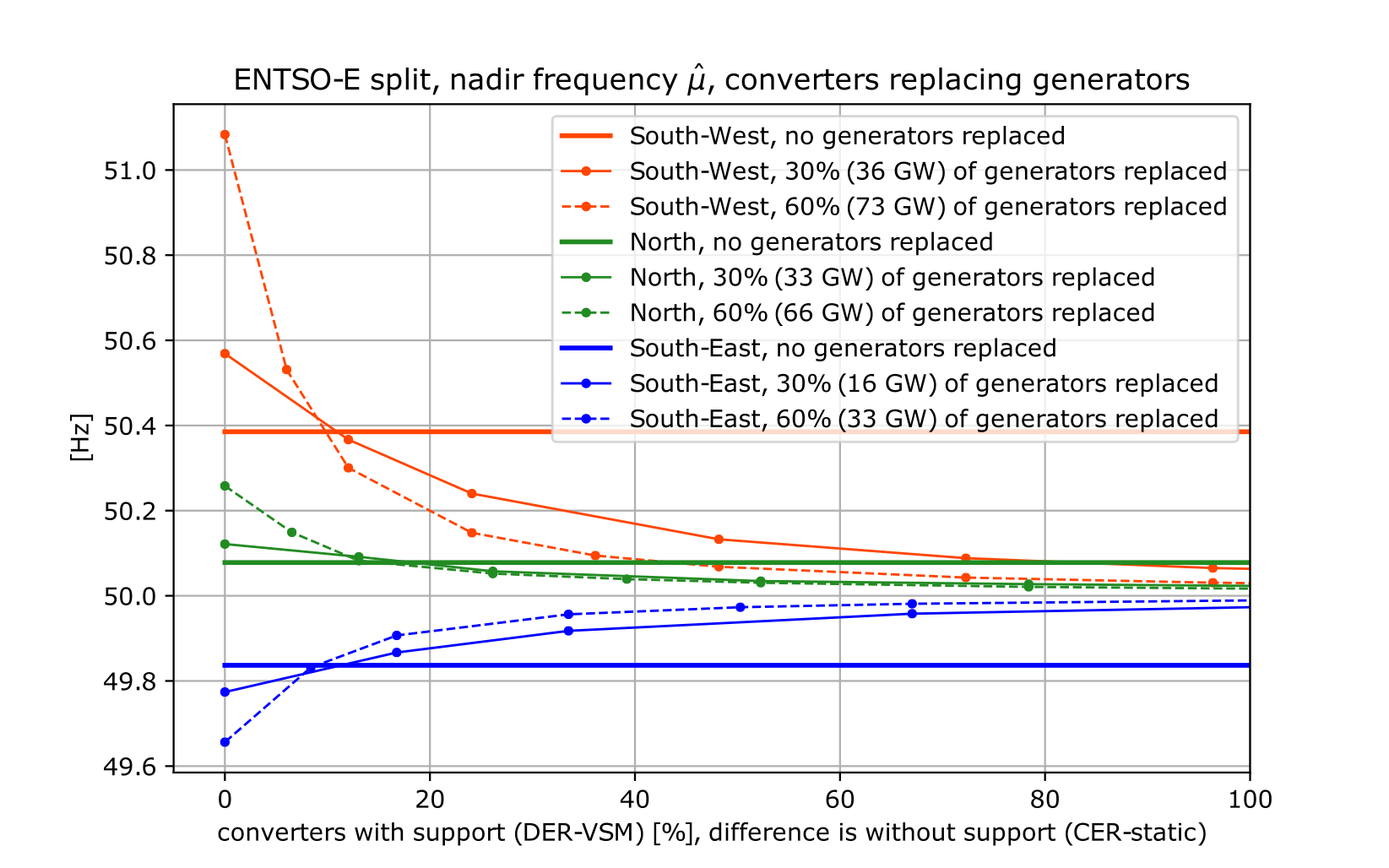ACSICON Novel analysis and control solutions for dynamic security issues in the future ENTSO-E network
- Develop a method creating reduced distribution grid models
- simple enough for dynamic transmission grid simulations with underlying distribution grid models
- accurate enough to capture main dynamic interactions within the distribu- tion grid and through the transmission grid
- Quantify stability bounds with and without dynamic support from converters
The project has investigated the potential of grid support from converters as well as the necessary practical considerations regarding controller tuning to allow penetration levels of grid-forming DERs upwards of 100% of the distribution grid load. At the moment, there is no industry consensus on what control structures should be used and how to tune and configure such controllers for maximum benefit to the overall stability of the grid. Furthermore, a large share of the DRES will be installed at the distribution level where their effect on overall system stability is not well understood. Since the changes of the relevant power system infrastructure is taking place now, it is desirable to obtain a better understanding of these issues and potential future policy changes. The robust solution to these challenges is a prerequisite for the successful European energy transition, as formulated for Switzerland by the Energy Strategy 2050, and is the focus of this project.
The energy transition is expected to lead to an increased generation from converter-connected distributed energy resources (DER) like photovoltaic and wind. At the same time, some traditional synchronous machine based generation is being decommissioned, for instance due to cost reasons or the nuclear phase-out, leading to new dynamic stability challenges. Recent developments have resulted in so-called grid-forming converter control architectures that also enable the provision of grid services such as frequency and voltage control, for which grid operation has traditionally relied on synchronous machine based generation.

The following main tasks have been performed in the project
- Modeling and tuning of grid-forming and grid-following converters.
- Investigation of interactions within distribution grids and model aggregation.
- Aggregation of dynamic distribution grid models (both in frequency and time domain) [Tool: Deployment of Matlab control toolbox for model reduction techniques for linear dynamic distribution grid models.]
- Validation in two simulation engines (Figure, large-scale RMS and EMT).
- Implementation in complex dynamic transmission grid model (ENTSO-E).
[Tool: in-house FlexDYN with Python modeling framework]

A large disturbance in form of a system split of the continental ENTSO-E system has been studied for multiple development paths of converters replacing synchronous machines (RES penetration, location and level of grid support from converters). It has been found that equipping a small share of the new converters (5%-10%) with grid support capabilities is sufficient to maintain the dynamic power system performance at today’s level, even if more than 50% of the synchronous generation is otherwise replaced by static converters without grid support (Figure 2).
